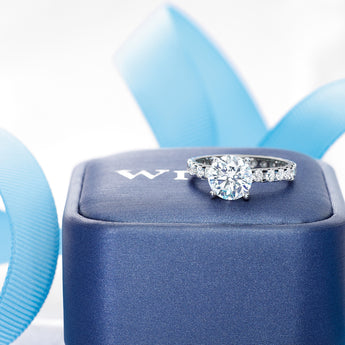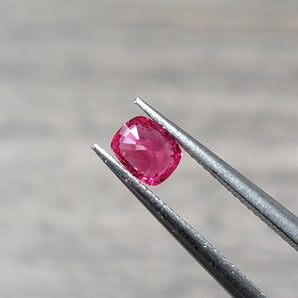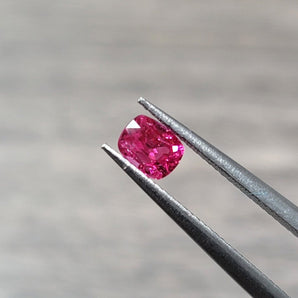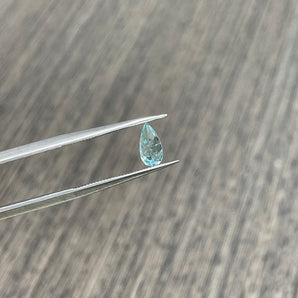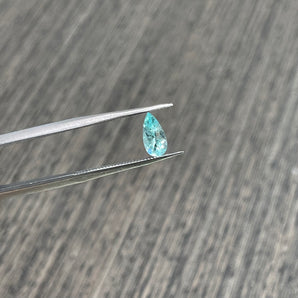Diamond Guide
Diamond 4Cs Standard
Diamond quality certification is based on 4C and widely uses 4C standards, including diamond carat, weight, cut, clarity and color. The higher the 4C rating, the higher the value of the diamond.
Carat weight
Carat weight is the standard measure of a diamond's weight, with 1 carat equal to 200 milligrams.
For the weight of a diamond, 1 carat is equal to 100 "cents," making the carat weight accurate to two decimal places. Jewelers can simply use "cent" to describe a diamond weighing less than 1 carat. For example, a 0.25 carat diamond is also called "twenty-five cents." Diamonds above 1 carat will be described by " carat" accurate to the nearest hundredth. For example, a diamond weighing 1.08 carats would be described as “One point and eight carats”.
The bigger the diamond, the rarer it is. Therefore, the price of a diamond increases as its carat weight increases. Yet even if two diamonds weigh the same, their value (and price) can be very different. Because the value selection of diamonds depends on the other three criteria in the 4C standards: clarity, color and cut.
The value of a diamond is not only determined by its carat weight, but also by the other 4C standards, all of which are indispensable.
Cutting
The high refractive index creates the dazzling light that makes diamonds famous around the world. Many people equate a diamond cut with its shape (round, emerald, square, pear, etc.). In fact, determining the grade of a diamond’s cut depends on how its facets interact with light.
To determine the cut grade of a standard round brilliant diamond, GIA calculates the proportions of each facet, which affect the diamond's face-up appearance. From this, GIA can identify the brilliance of each diamond due to the interaction of light and facets:
Brightness: the white light reflected back from inside and outside the diamond
Fireworks: white light is analyzed into a spectrum of seven colors
Sparkle: The brilliance produced by a diamond, as well as the formation of light and dark areas within the diamond due to light reflection
In addition, GIA's cut grade appraisal also includes evaluating the correlation between the weight and diameter of the diamond, the thickness of the girdle (which can affect the solidity of the diamond), the symmetry of the facets and the polishing quality of each facet, etc. The diamond design and Cutting technology.
Clarity
Natural diamonds are made from carbon elements that have been tested under high temperature and high pressure. This process also causes each diamond to have internal characteristics, which we call “'Internal contents', on the surface it is called “surface features”.
The criteria for evaluating diamond clarity include the number, size, conspicuity, nature, location and impact of the above characteristics on the overall appearance of the diamond. Although there is no absolutely flawless natural diamond in the world, generally speaking, the higher the clarity of the diamond, the higher the value.
The inclusions and characteristics of diamonds are usually very small and can only be seen by professional diamond appraisers. To the naked eye, VS1 diamonds and SI2 diamonds may look exactly the same, but their quality and value are very different. Therefore, professional and accurate clarity identification is very important.
Colour
For most precious diamonds, their color grading standard depends on their degree of colorlessness.
A diamond with pure chemical composition and excellent structure is colorless like a pure drop of water and has a high value. GIA created the D-Z color grading system, which compares diamonds with different colors under precisely controlled lighting and observation conditions. “Compare the color stones to assess their colorlessness.
GIA's D-Z color grading system is the industry-recognized grading standard. D grade is the highest color grade for diamonds, meaning it is completely colorless. From D to Z, as the color deepens, the diamond grade gradually decreases. Although the color difference between diamonds is very subtle and difficult for ordinary people to distinguish, it will cause a huge difference in diamond quality and price.
WILLS 5C - Evaluation
WILLS' criteria for carefully selecting diamonds for you are not limited to the 4Cs. Diamonds are natural minerals and cannot be described in words. Our appraisers will personally select the diamonds with the highest sparkle for customers, in order to select the top quality according to the 4C standards. The quality is for customers to choose, use a professional perspective to criticize the quality of diamonds, and tell customers what is worth referring to besides the certificate.

